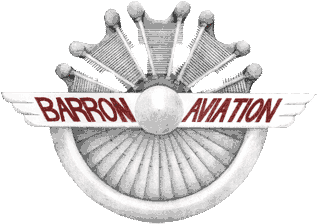Corrosion
This page is dedicated to the corrosion potential that any aircraft faces.
First lets look at the basics of the corrosion process. Corrosion is a complex process of electro-chemical action that causes metals to be converted into their salts and oxides. this process results in powdery substances that replace the metal having no structural strength whatsoever. The three requirements for this process to occur are as follows: 1) There must be an electrical potential difference within the metal. 2) There must be a conductive path between the two areas of potential difference. 3) There must be some form of electrolyte or fluid covering the two areas.
Preventing, or more realistically, controlling corrosion on aluminum aircraft structures is the goal. Once corrosion has formed the only course of action is to remove all of the corrosion products and re-protect the metal surface. If the damage is too extensive, the affected structural components must be replaced. Prevention can be accomplished with a variety of protective barriers such as: 1) The pure aluminum clad covering the alloy on all of the sheet aluminum based components of the aircraft. 2) A product such as Alodine that converts the metal’s surface into a protective barrier. 3) Various forms of primers and paints that today can create an almost impervious coating. 4) Several anti-corrosion products designed to be fogged or sprayed into aircraft structures. 5) Simply keeping the metal clean and dry thus removing the electrolyte from the equation. Any or all of these methods can be used to combat the corrosion process.
We have found levels of corrosion ranging from minor skin pitting (both interior and exterior) up to extreme cases where entire sections of structure are missing. On the Cessna 190/195 series aircraft we have encountered repeated problems with specific areas and conditions which I will list from most frequent to least: 1) The most common problem area we see is with the magnesium components on the aircraft such as the inboard aileron hinge brackets, original wheels and brake calipers. Magnesium is a highly reactive metal and once it starts the corrosion process it progresses rapidly. This results in extensive and deep corrosion usually rendering the component un-airworthy. We recommend cleaning these components down to bare metal, inspecting and applying fresh modern protective coatings to still airworthy pieces. 2) The second most common problem we see is in the inboard leading edge wing bay. This is where the cockpit fresh air vent hoses are routed. Many of these hoses are bad and do not get replaced due to the difficulty of accessing them. When the aircraft is exposed to rain it is allowed to dump into this bay. We suggest replacing these hoses, cleaning this bay and treating with some form of anti-corrosion treatment or priming if it is accessible. 3) The most dangerous situation we encounter with the airframe itself is caused from improper removal of paint strippers. Modern urethane paints require aggressive strippers for removal. These products contain such things as Methylene-Chloride and Formic Acid. These products are very caustic to aircraft structures if exposed for long periods of time. We have seen several aircraft that have been stripped and the stripper was not properly removed and neutralized from between the lap joints. This must be done very thoroughly and while the stripper is still liquid. This particular scenario is concerning due to the lack of obvious visible results. I have seen more than one case here where an airplane was stripped by the owner in preparation for new paint then stored for a few years. when the project was resumed there were numerous areas where the rivet heads could be removed with moderate side pressure. If you are considering stripping your aircraft or having it stripped research these processes thoroughly. 4) Leaking windshields can cause troublesome corrosion due to the tendency of interior pieces holding moisture. 5) Interior insulation and the original spray on sound deadening has proven to induce corrosion. 6) We have seen a few cases of intergranular type corrosion on the front and rear spar carry through aluminum structures. Pay special attention to the headliner bow attachment strap clip points at the rear spar unit. Both cases we have seen are in aircraft that have been in poor storage conditions. 7) Lastly, for a little humor, make sure there are no animals living in your airplane! We discovered the remains of a raccoon or possum that lived (and died) in the wing of an inactive twin beech requiring the replacement of several wing ribs and skins in the area it used as a restroom. Animal urine is very corrosive.
We strongly recommend treating older aircraft with an anti-corrosion product at the time of annual inspection when the aircraft is already opened up. See our page on Corrosion Treatment under “Services”.
I hope not to have frightened anyone too much. Most of the aircraft we see in our shop are in very good shape, however many are being removed from years of storage in various conditions and reassembled or sold as projects. Pay very close attention to the inspection of any aircraft prior to purchase!
